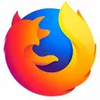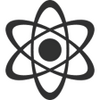A free application that allows users to create geospatial information and visualize it using the huge database of geospatial data
A free application that allows users to create geospatial information and visualize it using the huge database of geospatial data
Vote: (63 votes)
Program license: Free
Developer: QGIS
Version: 1.7.4
Works under: Windows
Vote:
Program license
(63 votes)
Free
Developer
Version
QGIS
1.7.4
Works under:
Windows
Pros
- A flexible, free, and open source software platform
- Integration with GRASS that improves the functionality in some major ways
- A friendly GUI for handling most of the mundane tasks
Cons
- A specialized tool kit that requires some significant and narrow knowledge to use effectively
Quantum GIS is an advanced information system that can be used to manipulate geospatial information in a number of interesting ways. The way we see the world has changed significantly, and the days of charting out maps of the world with a roll of parchment and an inked quill are long behind us. The cartographers of today aren't looking for new land. Instead they're looking to analyze the value behind land, and this value can be measured in any number of ways. Whether it's analyzing natural resources in a stretch of unoccupied land, determining the voter demographics in a political district, or helping a business owner find the best location for high yield foot traffic, the way we interact with maps can have a significant impact on our lives and those of the people around us. Quantum GIS provides you with a wide range of tools you can use to create responsive and meaningful maps of the real world, and it also gives you the means to analyze and distribute that information out to the public.
Of course all the data in the world isn't worth anything if you don't have a map to chart it against, and Quantum GIS provides a comprehensive selection of tools you can use to build a map out from scratch or adjust an existing map. All of these are handled through a clean and presentable graphical user interface so you don't have to worry about coding everything painstakingly by hand. A map composer allows you to put together your maps, and while the option is available to do this by hand, you can also make use of real world data gathering devices like drones and stationary cameras to help you more accurately map your territory and automate the process. Once the map is in place, you have plenty of options for how you demarcate it. Data-defined vector and raster symbology tools are included so you can carve out the map according to any number of different variables, and data-defined feature labeling runs complementary with the annotation tools packed in to this software. Once everything is meticulously place in there, either by hand or by automated processes, users can search, view, and alter these attributes as the situation demands.
Data analysis is also included standard with Quantum GIS, and it gets a lot of its value through its integration with the GRASS GIS. This integration allows users to have access to over 400 modules distinct from those built in to Quantum GIS, and Quantum also uses a processing plugin to allow you to more flexibly import third party algorithms. The strength of Quantum GIS is how it combines a relatively user friendly approach to data mapping in a format that's highly modular and flexible to the demands of each individual.
Pros
- A flexible, free, and open source software platform
- Integration with GRASS that improves the functionality in some major ways
- A friendly GUI for handling most of the mundane tasks
Cons
- A specialized tool kit that requires some significant and narrow knowledge to use effectively




